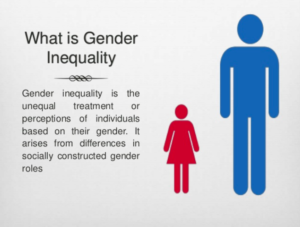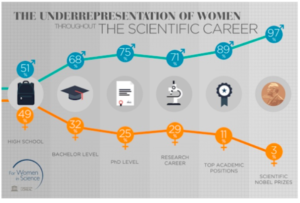Multi Year Study Reveals Significant Bias Against Women in Grant Review
In case you missed it in the holiday hustle, a team of researchers posted the most in depth analysis of the role of gender in grant review at the end of December. A prior 2007 meta analysis reported an alarming 7% gap between men and women in the review process, but variables were difficult to control. While the story gained international attention, few agencies made changes to the review process.

I don’t wear red dresses, but I think you get the idea of this picture.
A change in the review process in Canada allowed Holly Witteman, Michael Hendricks, Sharon Straus and Cara Tannenbaum to parse the role of the grant applicant vs. the role of the science while the team was able to build in controls for variables such as age, experience, discipline.
In their BioRxiv post, the scientists found women’s scores were on par with men’s when study sections were asked to evaluate the science of grant applications. However, when study sections were asked to evaluate the investigator, women’s scores suddenly dipped 4% lower than their male counterparts. Four percent is a huge difference in countries like the US and Canada where paylines hover around the 12th percentile.
Canada has struggled with many of the same issues of gender and seniority bias as the US, leaving junior scientists and women struggling to maintain their labs. One can only imagine the program coordinators at NSF, NIH, CIHR and other funding agencies should now be more eager to cherry pick top rated grants from female PIs to correct this problem and making immediate fixes to both inform panels about this bias and expose them to training on unconscious bias.
In addition to their extremely well-presented data, this paper is worthy of your attention for how it lays out the devastating landscape of professional biases documented against women in STEM.
I’ve taken the liberty of showing a few of their examples which come with ample citations.
- Compared to men, women are more often characterized as lacking the brilliance, drive, and talent required to carry a novel line of inquiry through to discovery with children as young as six years old endorsing such stereotypes.

- Women are less likely than men to be viewed as scientific leaders or depicted as scientists.
- Women in academia contribute more labor for less credit on publications, receive less compelling letters of recommendation, are expected to do more service work, receive systematically lower teaching evaluations despite no differences in teaching effectiveness, and are more likely to experience harassment.
- While men in academia have more successful careers after taking parental leave, women’s careers suffer after the same.
- Women receive less start-up funding as biomedical scientists and are underrepresented in invitations to referee papers.
- Compared to publications led by men, those led by women take longer to publish and are cited less often, even when published in higher-impact journals.
- Papers and conference abstracts led by women are accepted more frequently when reviewers are blinded to the identities of the authors.
If you are thinking about unconscious bias in your review process, I am a huge fan of taking this offering from Harvard scientists – an online test (free) and seeing how you do and checking out Catalyst’s numbers on bias in the workplace.
The results just might surprise you.






0 Comments